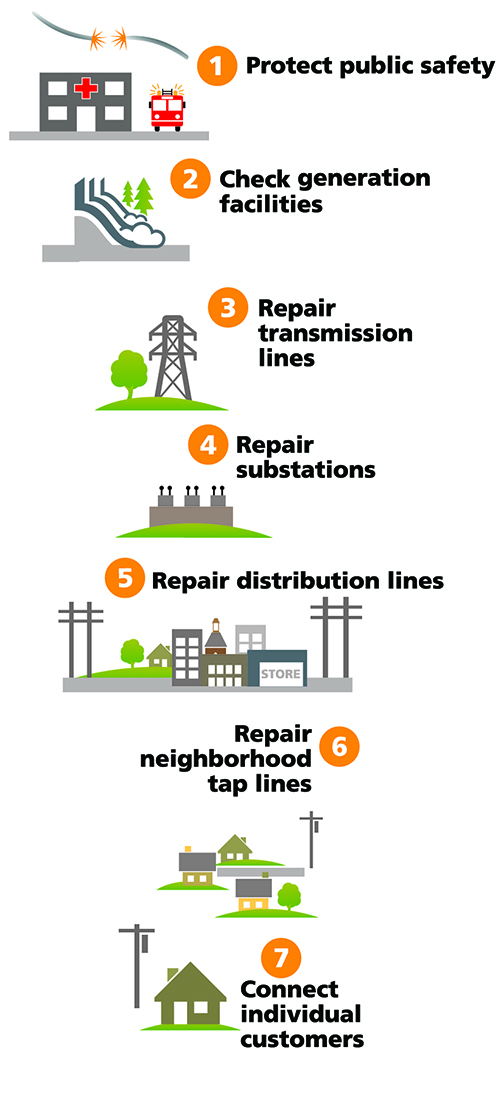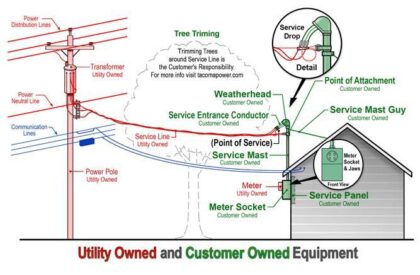How We Restore Power
Power outages can be caused by any number of things, including storms, car wrecks and curious animals. View our outage map to see if your location is affected.
How we restore power depends on the cause, extent and location of the outage. Rural lines may be difficult to reach and repair, while removing a branch from a feeder line can be quick.
After safety needs are met, we prioritize the work that will get the most customers back on line. Then we keep working our way down the system. We appreciate your patience and help pinpointing the outage.
Generally, here’s how we restore power:

- Perform initial assessment: We determine the location and nature of the outage. Based on those factors, we send out appropriate crews and equipment.
- Protect public safety: We clear live power lines and repair equipment that poses a safety hazard. Public health and safety facilities, such as hospitals, clinics and utilities (water, sewer, natural gas and telephone) get first priority.
- Repair transmission lines: Transmission lines supply power from generating facilities, like dams, to one or more substations. They rarely fail, but it is possible. Since trouble on a transmission line affects thousands of customers, it gets attention first.
- Repair substations: We survey any substations involved in the outage to check for abnormalities. If we can fix the issue at the substation, we can get power back on for a large number of customers. Substations act as a distribution and switching station.
- Repair feeder lines: Feeders are like arterial streets. We patrol the individual lines, working our way down the system from the substation. This is often how we find limbs and trees on lines. Feeder lines serve 1,000 to 3,000 customers and are usually the lines affected when you hear of a power outage on the news.
- Repair tap lines: Tap lines move power from feeder lines to individual streets. They feed pockets of 20 to 30 homes each.
- Restore power to individual homes or businesses: This task takes the longest. Sometimes damage can occur on the service line between your house and the transformer on the pole. This may be why your neighbor has power but you do not. This is why we may need you to report your outage multiple times through a multi-day restoration effort as we work our way through the system.
- Communication lines will be repaired or maintained by the local cable or phone providers.
Whose responsibility is it?
Tacoma Power installs and maintains:
- Power distribution lines, poles, transformers and power neutral lines within our right of way.
- The power service drop or wire carrying electricity from Tacoma Power’s lines to the mast on your home or business (trees or shrubs under this wire on your property should be maintained by you).
You are responsible for these components:
- The mast, strike plate and meter socket to your home or business (identified in the diagram).
- If electricity comes to your house through overhead power lines and your house is out of power, the problem could be your mast. Sometimes strong winds or tree branches can pull the mast away from the house during a storm.
- The mast, which is outside your home (either on your roof or at your meter) usually looks like a metal pipe. Do not touch the mast. It is energized. If it looks loose, bent or damaged, you will need to contact an electrical contractor to get it fixed. The mast is part of your home, and therefore, your responsibility. Tacoma Power cannot restore power to your home until your mast is fixed.
- We may require repairs to damaged service equipment before power can be safely restored. You are responsible for damaged electrical service equipment at your home or business. Only a licensed electrical contractor should attempt to work on these parts of your electrical system. An electrical permit will be required.


